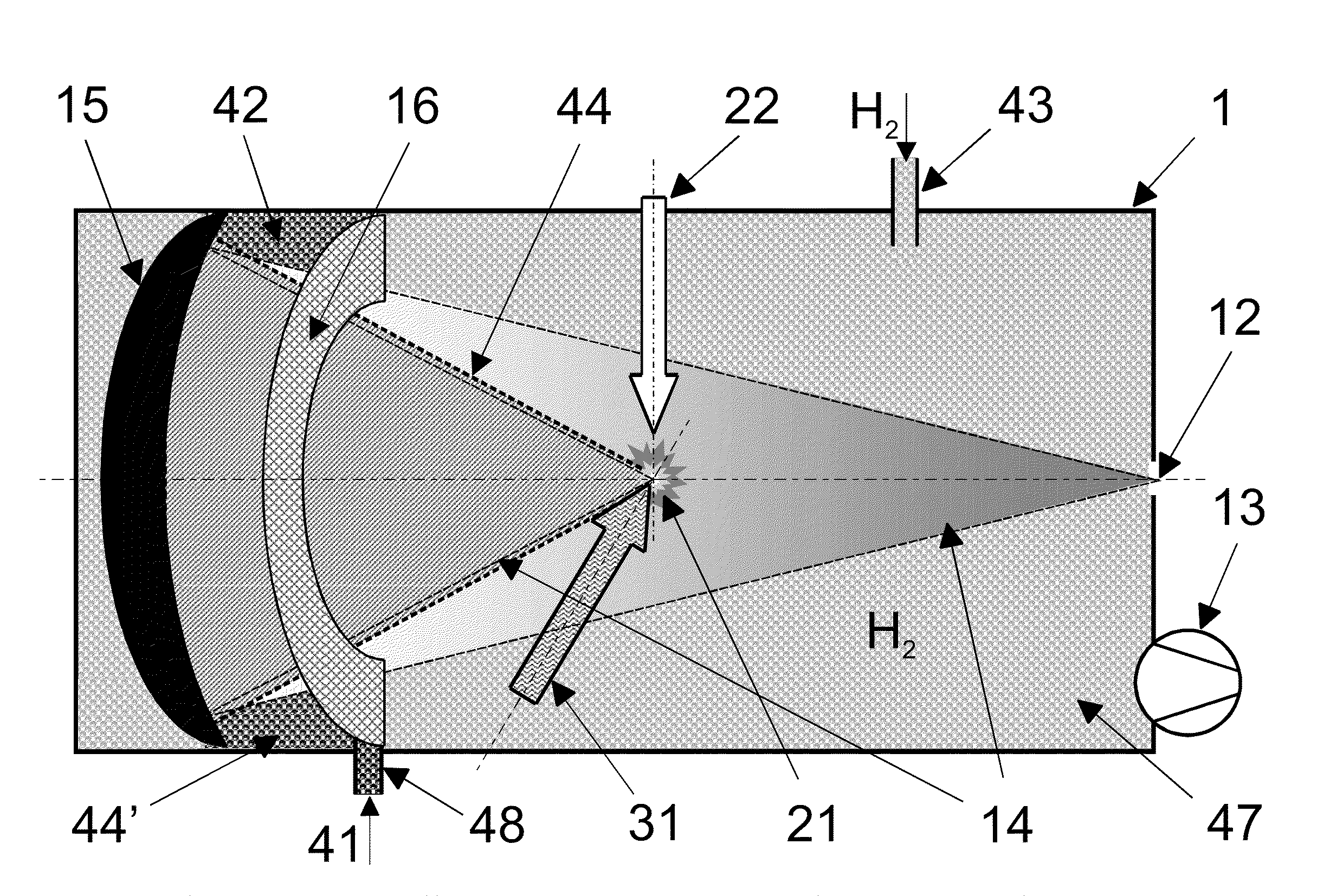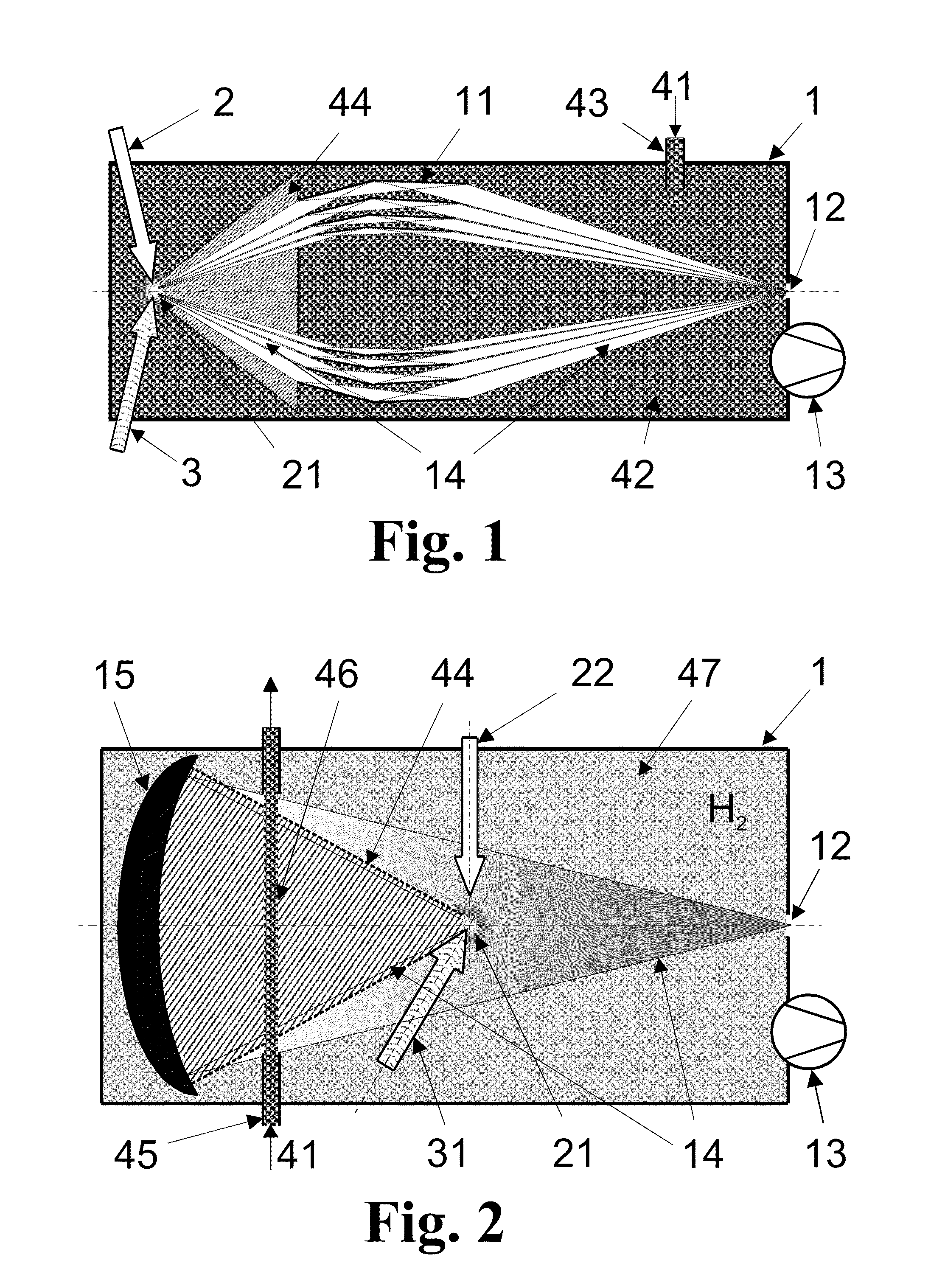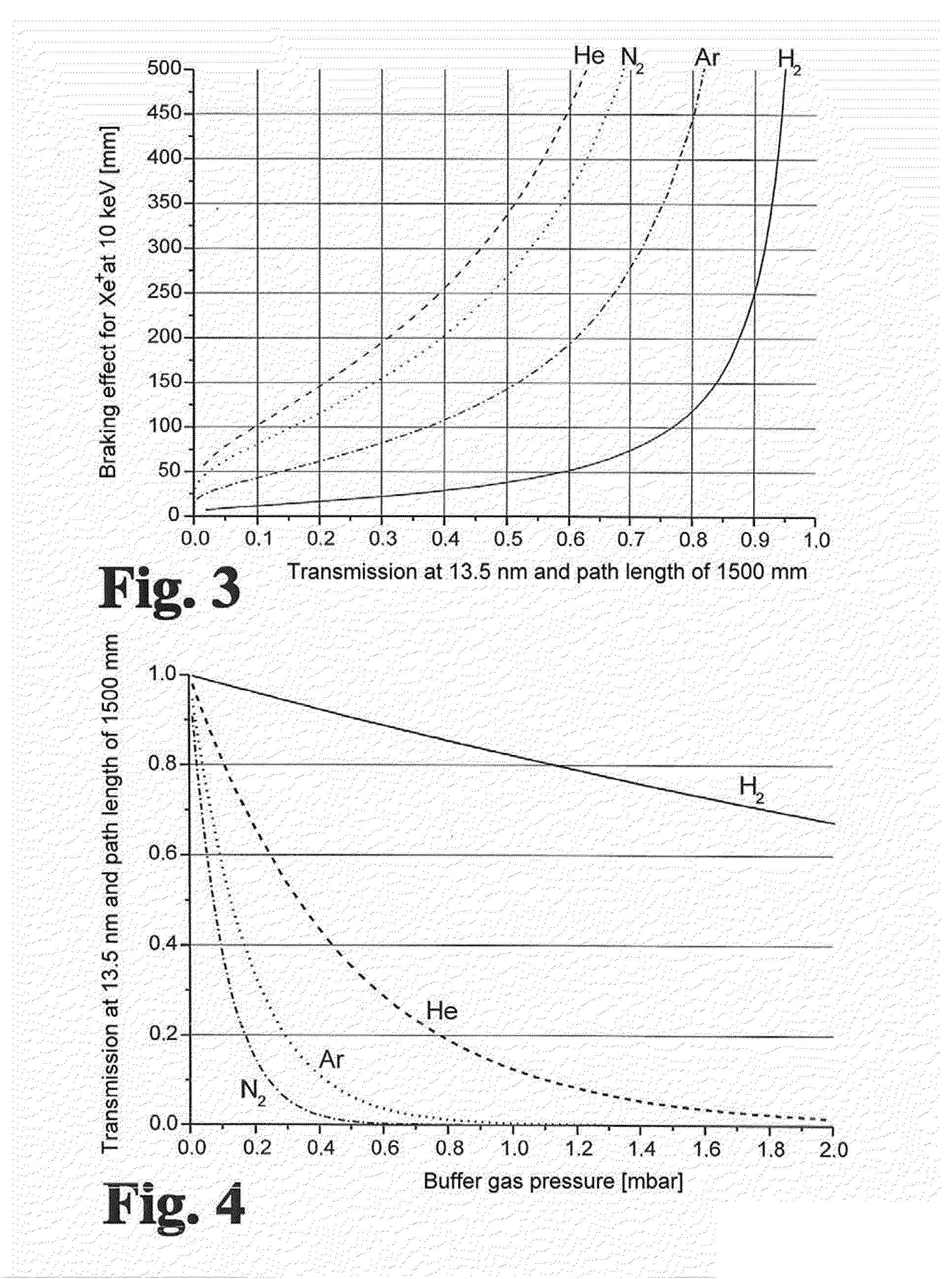Method and arrangement for the operation of plasma-based short-wavelength radiation sources
a short-wavelength radiation source and plasma technology, applied in the direction of radiation therapy, x-ray tube with very high current, therapy, etc., can solve the problems of adversely affecting the plasma (or its development), difficult to realize high-pressure gradients, and damage to these components, so as to achieve the effect of extensive debris mitigation
- Summary
- Abstract
- Description
- Claims
- Application Information
AI Technical Summary
Benefits of technology
Problems solved by technology
Method used
Image
Examples
Embodiment Construction
[0048]The method according to the invention for operating a plasma-based short-wavelength radiation source with a high lifetime has the following steps:
[0049]an emitter material with a high emission efficiency in the desired wavelength range is supplied in a metered manner in a vacuum chamber for generating an emitter plasma;
[0050]hydrogen gas is introduced as buffer gas with a pressure-distance product in the range of 1 to 100 Pa·m;
[0051]a spatially narrowly limited hot emitter plasma is generated by a directed energy feed;
[0052]fast particles of emitter material are slowed down below a defined energy level (so-called sputter threshold) by impacts in the buffer gas;
[0053]the short-wavelength radiation exiting divergently from the emitter plasma is bundled by means of a collector in an intermediate focus;
[0054]the vacuum chamber is continuously suctioned out for quasistatic adjustment of pressure in the vacuum chamber and for removing excess emitter material and buffer gas.
[0055]At ...
PUM
 Login to View More
Login to View More Abstract
Description
Claims
Application Information
 Login to View More
Login to View More - R&D
- Intellectual Property
- Life Sciences
- Materials
- Tech Scout
- Unparalleled Data Quality
- Higher Quality Content
- 60% Fewer Hallucinations
Browse by: Latest US Patents, China's latest patents, Technical Efficacy Thesaurus, Application Domain, Technology Topic, Popular Technical Reports.
© 2025 PatSnap. All rights reserved.Legal|Privacy policy|Modern Slavery Act Transparency Statement|Sitemap|About US| Contact US: help@patsnap.com



